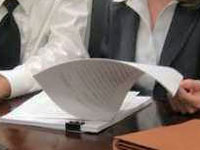Criminal Law and How it Works:
Criminal law, also called penal law, is the collection of rules related to crime. The laws define what conduct is prohibited by the state. These laws are determined by assessing behavior that harms, threatens or endangers the safety or welfare of the public. Punishment is given to those who breach these established rules. Criminal law is different from civil law in its potential punishments.
Every crime must have criminal elements. In serious crimes, capital punishment may be given. The most common form of punishments given in the United States are fines and costs, as well as incarceration in a jail or prison. Jails and Prisons, along with additional Government supervision through punishments such as parole, probation and house arrest are common in the United States. The government may charge the offender fines or seize their money or property as part of the discipline.
There are five objectives for determining criminal law punishment: retribution, deterrence, incapacitation, rehabilitation & restitution.
Retribution suggests that offenders should suffer in some way to balance the scales. This is also known as righting the balance.
Deterrence comes in two forms: individual and general. In both forms it is the notion that imposing strong penalties should deter misconduct.
Incapacitation is the process of keeping offenders away from society in order to protect the public from harm. This can be done through death penalty, banishment or prison sentencing.
Rehabilitation strives to change a criminal into a contributing member of society by convincing the individual that their behavior was wrong.
Restitution is a form of victim-oriented punishment, in which the damages inflicted are to be repaired by the offender.
Proof of a crime requires proof of an act, this is also known as actus reus or guilty act.
Proof of intent to do wrong is known as mens rea or guilty mind.
Our Tampa CRIMINAL DEFENSE Lawyers are ready to provide you with a detailed consultation for FREE!
Some crimes require both forms of proof. Others require only one form. In cases where both types of proof are required, it must be evident that the crime and intent occurred at the same time and not sequentially at different moments.
Actus reus involves the physical activity of committing a crime. It is the action, omission to act or threat of action. If there is more than one possible cause, actus reus can be nullified for lack of causation. The thin skull rule says that an offender is responsible for injuries relating to their misconduct. This is true even when the injuries or damage done is unusually high or extensive.
Mens rea is linked to the mental part of the crime. It has to do with the intention to perform the wrongful act. This is separate from the motive. Recklessness is a lower offense. It is when the act is recognized as dangerous but still committed. Wrongfulness and transferred malice are also considered under this category.
There are different offenses in criminal law. Participatory offenses usually occur when a crime does not come to fruition. It can include abetting, conspiracy, attempt and aiding. Property offenses include, but are trespassing, robbery and embezzlement. Rape, assault and battery can be classified as personal offenses. Fatal offenses involve death and manslaughter.
Because of the many complex variables involved in criminal law, it is essential that you find an experienced criminal law attorney who can provide you with an adequate defense.
When criminal charges are brought against you, your future is hanging in a delicate balance. Your freedom is on the line, fines are at stake, and the potential to land a career and lifelong disability of a felony charge is looming overhead. The team of Tampa criminal law attorneys at Fernandez Law Group know just how serious and important every last detail can be. Your future, and our reputation depends on it. We cannot and will not allow either to be jeopardized. It’s time you put your trust into us.


